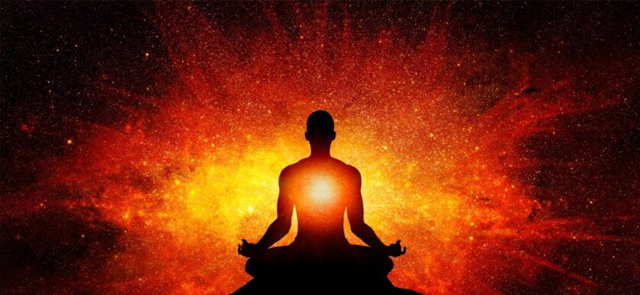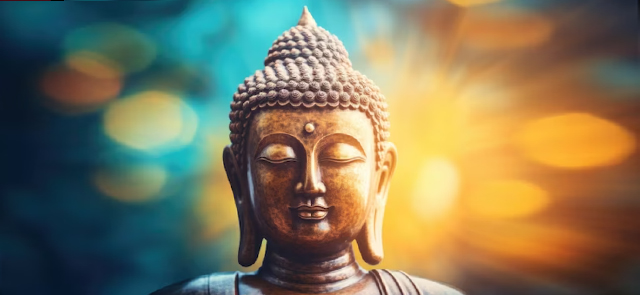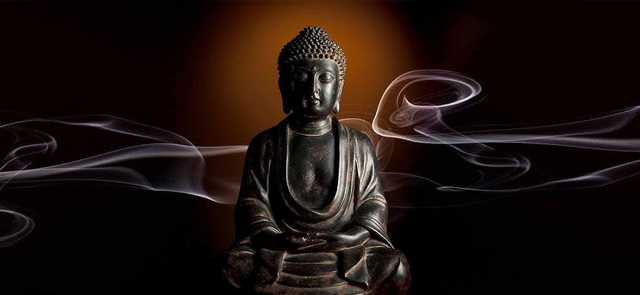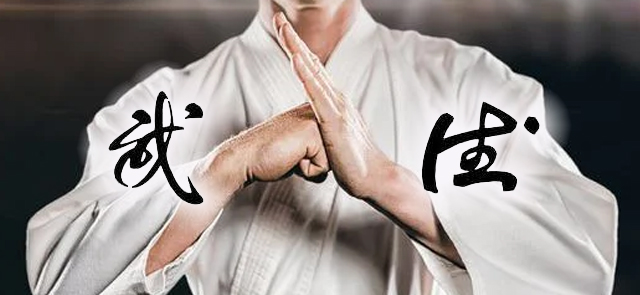"So too, bhiksus, the things that I have known by direct knowledge are more; the things that I have told you are only a few. Why have I not told them' Because they bring no benefit, no advancement in the Holy Life, and because they do not lead to dispassion, to fading, to ceasing, to stilling, to direct knowledge, to enlightenment, to Nirvana. That is why I have not told them. And what have I told you' This is suffering; this is the origin of suffering; this is the cessation of suffering; this is the way leading to the cessation of suffering. That is what I have told you. Why have I told it' Because it brings benefit, and advancement in the Holy Life, and because it leads to dispassion, to fading, to ceasing, to stilling, to direct knowledge, to enlightenment, to Nirvana. So bhiksus, let your task be this: This is suffering; this is the origin of suffering; this is the cessation of suffering; this is the way leading to the cessation of suffering."
[Samyutta Nikaya, LVI, 31]
The Four Noble Truths [Chin.: sìshèngdì 四圣谛 | Sanskr.: चत्वारि आर्यसत्यानि catvāri āryasatyāni] summed up, in a systematic formula, are the central teaching of the Buddha.
The Truth of Suffering [Chin.: kǔ 苦 | Sansk.: Dukkha satya] https://www.shaolinchanqijian.com/site/dharma_reading/duhkha
The Truth of the Cause of Suffering [Chin.: jí 集 | Sansk.: Samudaya satya]
The Truth of the Cessation of Suffering [Chin.: miè滅 | Sansk.: Nirodha satya]
The Truth of the Path leading to the Cessation of Suffering [Chin.: dào道 | Sansk.: Magga satya
The Truth of Suffering
The Buddha's discovery of the solution to the problem of suffering began with the recognition that life is suffering. This is the first of the Four Noble Truths. If people examine their own experiences or look at the world around them, they will see that life is full of suffering. Suffering may be Physical or Mental.
Physical suffering takes many forms. People must have observed at one time or another, how their aged relatives suffer. Most of the aged suffer aches and pains in their joints and many find it hard to move about by themselves. With advancing age, the elderly find life difficult because they cannot see, hear or eat properly. The pain of disease, which strikes young and old alike, is unbearable, and the pain of death brings much grief and suffering. Even the moment of birth gives pain both to the mother and to the child that is born.
The truth is that suffering of birth, old age, sickness and death is unavoidable. Some fortunate people may now be enjoying relatively happy and carefree lives, but it is only a matter of time before they, too, will experience suffering. What is worse, this suffering must be born alone.
Besides physical suffering, there are also various forms of mental suffering. People feel sad, lonely or depressed when they lose someone they love through separation or death. They feel irritated or uncomfortable when they are forced to be company of those whom they dislike or those who are unpleasant. People also suffer when they unable to satisfy their limitless needs and wants.
When the Buddha said that there is suffering in life, he did not deny that there is happiness also. On the contrary, he spoke of many kinds of happiness such as the happiness of friendship, the happiness of family life, and so on. But all these kinds of happiness are impermanent and when one loses them, one suffers. For example, one may like a pleasant and charming person and enjoy his or her company. But when one is separated from that person, the happiness turns into suffering. One suffers because of one's attachment to pleasures that do not last.
People often remain unaware of the inevitable sufferings of life because they are distracted by temporary pleasures.
The Truth of the Cause of Suffering
The Buddha had observed that life is suffering. Before He could find a solution to the problem of suffering in life, he had to first look for the cause of suffering. The Buddha was just like a good doctor who first observes a patient's symptoms and identifies the cause of the illness before prescribing a cure. The Buddha discovered that the direct causes of suffering are desire or craving, and ignorance. This is the truth of the cause of suffering, which is the Second Noble Truth.
Craving is the deep-seated desire that all living beings have for the pleasures of the senses and for life itself. For instance, people always seek to enjoy good food, entertainment and pleasant company. Yet none of these can give them complete and lasting satisfaction. After the fine meal has been eaten, the beautiful music heard and the pleasant company shared, one is still not content. One would like to enjoy these pleasures again and again, and for as long as possible.
People who desire to own many things can never be fully satisfied too. Like children in a toyshop, they crave for all the attractive things they see around them. But like children too, they soon become dissatisfied with what they already have and desire for more. Sometimes, they can hardly eat or sleep until they get what they want. Yet when they succeeded in getting what they want, they may still find their happiness short-lived. Many will be too worried for the safety and condition of their new possessions to enjoy it. Then when the object they possess eventually breaks into pieces and has to be thrown away, they will suffer its loss even more.
When we have obtained something that we desire, we may want more and more of it and so greed arises. Because of desire and greed, people will lie, cheat and steal to get what they want.
Uncontrolled desires can also lead to addiction, for example, smoking, drinking and overeating all lead to suffering and cause mental and physical harm.
If one is prevented by another person from getting what one desires, one may feel anger with that person. Desire when obstructed can lead to ill will and anger. This in turn can lead to harsh words, violent quarrels and even fights or killings. All this is suffering.
Craving or desire is like a great tree having many branches. There are branches of greed, of ill will and of anger. The fruit of this tree is suffering, but how does the tree of craving arise' Where does it grow' The answer is that the tree of craving is rooted in ignorance. It grows out of ignorance.
Ignorance is the inability to see the truth of things, to see things as they really are. There are many truths about the world which people are ignorant of because of the limitations of their understanding.
Science has shown, for instance, that there are sounds that people are unable to hear and waves of light, which they are unable to see. People would be totally unaware of radio waves, or ultra-violet light rays if special instruments had not been developed to enable them to observe these things. So long as people remain ignorant of things about the world in which they live, they suffer from all kinds of misunderstandings and delusions.
When people develop their minds and acquire wisdom through study, careful thought and meditation they will see the Truth. They will see things as they really are. They will understand the suffering and impermanence of life, the Law of Cause and Effect and the Four Noble Truths. By overcoming craving and ignorance, they will attain happiness and Enlightenment just as the Buddha did about 2500 years ago.
The Truth of the Cessation of Suffering
The Buddha's realization of the end of suffering and his attainment of Nirvana at the age of thirty-five, crowed his search for Truth with success. For six years, the Bodhisattva had spared no effort to find a solution to the problems of suffering. He had tried the principal methods of ending suffering and had found them incomplete. Eventually he found his own solutions to the problems of life.
Having realized the Truth through his own efforts, the Buddha offered it to all that were ready to listen.
There is an old story of a turtle and a fish. The turtle lived on land as well as in the water while the fish only lived in the water. One day, when the turtle had returned from a visit to the land, he told the fish of his experiences. He explained that creatures walked rather than swam. The fish refused to believe that dry land really existed because it was something beyond his own experience. In the same way, people may not have experienced the end of suffering, but it does not mean that the end of suffering is not possible.
A patient must have confidence in an experienced doctor, otherwise he will never take the medicine that the doctor has prescribed and he will not be cured of his sickness. Similarly, people must have confidence in the Teaching of the Buddha, who has shown that end of suffering is really possible.
The end of suffering is the final goal of the Buddha's Teaching. It can be experienced by anyone here and now. For example, when greed and anger arise in one's mind, one experiences unhappiness and when the thoughts of greed and anger cease, one's mind becomes happy and peaceful. To end suffering completely one must remove desire, ill will and ignorance. This is the Third Noble Truth of the End of Suffering.
The Buddha taught that the end of suffering is supreme happiness. Every step towards the end of suffering is accompanied by ever-increasing joy. Those who follow the Teachings of the Buddha live happily without greed, even among those who are overwhelmed by desire. They live happily without anger, among those who harbor ill will. The more people free themselves from desire, ill will and ignorance, the greater their happiness will be. When they have completely overcome desire, ill will and ignorance, they will know the supreme happiness as experienced by the Buddha.
By putting the Buddha's Teachings into practice, people can also achieve supreme Enlightenment. Enlightenment has countless qualities, of which perfect wisdom and great compassion are the most important. With perfect wisdom and great compassion we are able to help countless beings to overcome their suffering.
The end of suffering has been described as supreme happiness and Enlightenment. However, these terms do not fully express the real nature of the end of suffering, or Nirvana. Nirvana cannot be exactly put into words. Attempting to describe Nirvana is like saying that a mango is sweet, but not like a banana or apple. One has to eat a mango in order to know for oneself what it really tastes like. Similarly Nirvana has to experience for oneself.
Therefore, if people have confidence in the Buddha's Teachings and put them into practice, they can achieve happiness, peace and Enlightenment.
The Truth of the Path leading to the Cessation of Suffering
As a youth, Prince Siddhartha enjoyed an indulgent life of pleasure in his father's palace. Later, when he renounced the worldly life and become an ascetic, he experienced the hardship of torturing his mind and body. Finally, not long before attaining Enlightenment he realized the fruitlessness of these two extreme ways of life. He realized that the way to happiness and Enlightenment was to lead a life that avoids these extremes. He described this life as the Middle Path.
These three ways of life may be compared to the strings of different tensions on a lute. The lose string, which is like a life of indulgence, produces a poor sound when struck. The tightest string, which is like a life of extreme asceticism, similarly produces a poor sound when struck and is also likely to break at any moment. Only the middle string, which is neither too lose nor too tight, produces a pleasant and harmonious sound when stuck. The middle path, like the middle string, is the best to chose.
So those who follow the Middle Path and avoid the extremes of indulging in one's desires and the opposite extreme of unreasonably torturing one's body and mind, will find happiness, peace of mind and Enlightenment. This is the Fourth Noble Truth of the path leading to the end of suffering.







